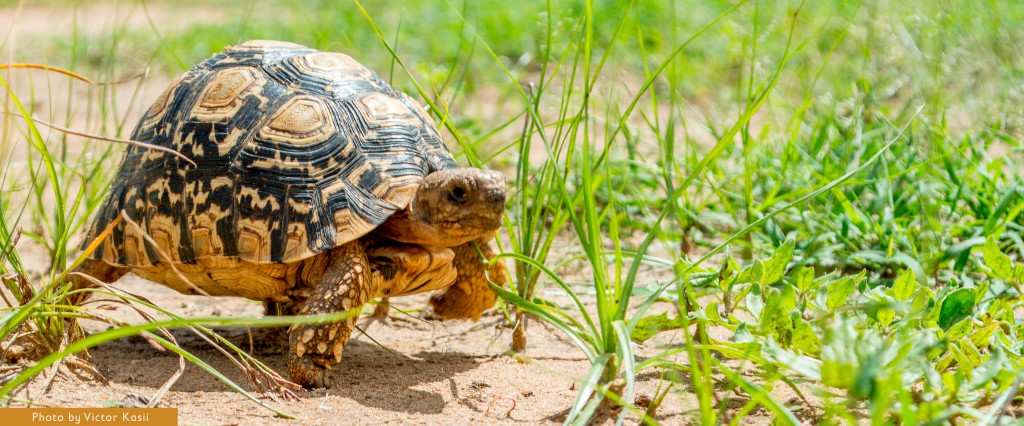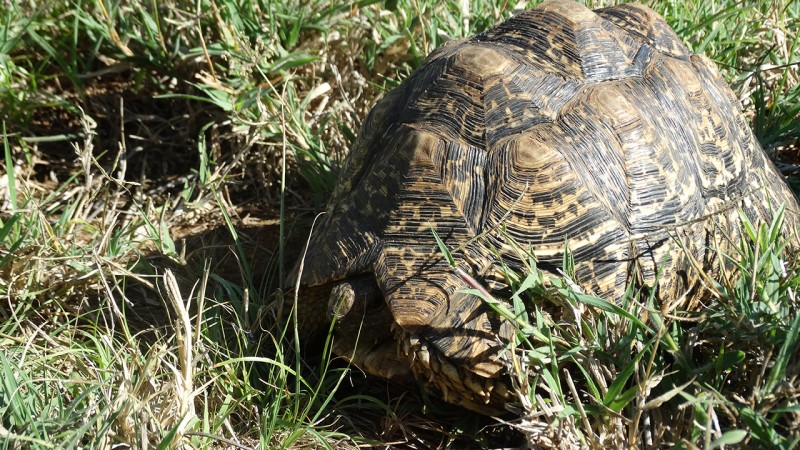Mpala Research Centre is home to many reptile species including the unmistakable Leopard tortoise. Each day, one or more slow but sure individuals will be seen crossing from one end of the Mpala campus to the other. They bear dome shells with distinctive yellow and brown spots and radiating circles that make the leopard tortoise one of the most beautiful of all tortoise species. Its markings make it easy to see how it got its name.
Leopard tortoises can grow up to nearly 130 lbs (58kgs) and their sturdy shells discourage most wild animals from bothering them, but foxes, coyotes, and mongooses sometimes eat eggs and hatchlings. The biggest problem a leopard tortoise faces may be the tiny tortoise tick. These parasites live in the seams of the tortoise’s shell or in the folds of its skin. They carry disease and weaken the tortoise.
Often seen on the live cams, this species is a strict herbivore and will be seen eating grass, though they prefer to graze on flowers, succulents, fungi, berries, and other fruit. Occasionally they will eat old bones or ash, possibly to supplement their calcium levels.
Interestingly, these upper shells of all tortoises and turtles are protected by plates called scutes, which are made of keratin—just like human fingernails!
Peace,
Victor Kasii @mpalalive




